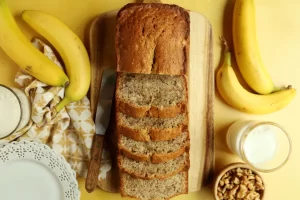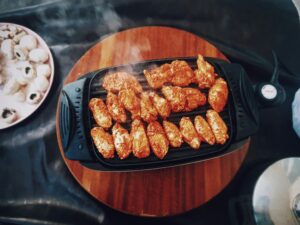Banana bread, as we know it today, didn’t exist until the 1930s in the United States. During the Great Depression, people tried to waste as little food as possible, so instead of tossing out overripe bananas, they started using them in recipes like moist banana bread. This is how moist banana bread began to grow in popularity as an easy and affordable treat.
Thank you for reading this post, don't forget to subscribe!The first modern moist banana bread recipe was published in 1933 in a cookbook called “Balanced Recipes” by Pillsbury. However, bananas themselves had become available in the U.S. only a few decades earlier, in the late 1800s, when they were introduced as an exotic fruit from the Caribbean.
With the introduction of baking soda and baking powder around the same time, it became easier to create the fluffy, moist banana bread we love today. Since then moist banana bread has been a favorite in kitchens everywhere, with many families having their own unique versions of the recipe.
Now that we’ve covered its history, let’s get into those 7 tips for making the best moist banana bread!
Banana bread is one of those classic comfort foods that many people love. It’s the perfect way to use up ripe bananas and makes a great snack or even breakfast. You probably know it for its sweet, soft, and sometimes cake-like texture, but if it’s not moist enough, banana bread can end up dry and crumbly—and no one wants that!
Getting the perfect moist texture is what really takes banana bread from good to great. Whether you’re new to baking or have been doing it for years, making moist banana bread can sometimes be tricky. That’s why we’re here to share 7 essential tips to help you bake the best, softest, and most delicious banana bread.
But before we dive into the tips, let’s take a quick look at how banana bread became so popular in the first place.
Moist Banana Bread
Baking the perfect Moist Banana Bread is an art, but with a few simple tips, you can achieve deliciously soft and flavorful results every time. First, make sure to use overripe bananas—those brown speckles mean extra sweetness and moisture. Don’t be afraid to mash them well, leaving a few small chunks for added texture.
Mixing wet and dry ingredients gently is key; overmixing can lead to a dense loaf. Adding a touch of sour cream or Greek yogurt gives a rich, moist crumb, while a splash of vanilla elevates the flavor. A pinch of cinnamon or nutmeg adds warmth, and folding in nuts or chocolate chips gives each slice a delightful surprise. Finally, don’t rush the baking process—low and slow ensures a perfectly tender loaf. Enjoy every slice!
1. Use Overripe Moist Banana Bread
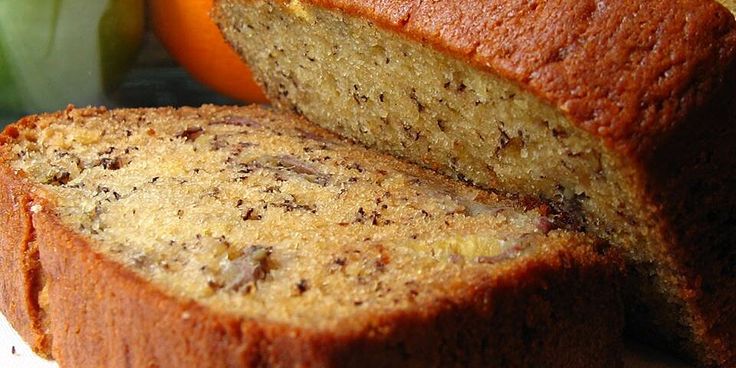
One of the best-kept secrets to making moist and delicious banana bread is using overripe bananas. Those bananas with brown spots or even completely brown skin may look like they belong in the trash, but they’re actually gold for baking! When bananas get overripe, their starches turn into sugar, making them much sweeter and softer. This natural sweetness and softness are what give banana bread that perfect combination of rich flavor and moist texture.
Overripe bananas also mash really easily, creating a smooth, creamy base that blends seamlessly with the rest of your ingredients. This helps keep your banana bread light and fluffy rather than dense and heavy. So, if your bananas are a little too ripe to eat on their own, don’t toss them—save them for banana bread!
Why Overripe Bananas Are Essential
Using overripe bananas makes your banana bread:
- Sweeter: The natural sugars in overripe bananas are much higher, which enhances the overall flavor of the bread.
- Softer: The softer texture of the bananas ensures your bread has a tender crumb and isn’t dry.
- Easier to Mix: Overripe bananas break down more easily, meaning you won’t need to overmix the batter, which can lead to tough bread.
How to Quickly Ripen Bananas
Sometimes, you just can’t wait for your bananas to ripen on their own. Thankfully, there are a couple of quick ways to ripen them so you can bake banana bread anytime you want:
- Oven Method: If you need ripe bananas right away, you can bake them in the oven. Preheat your oven to 300°F (150°C), place the bananas (with the peel on) on a baking sheet, and bake them for about 15-20 minutes. When the skin turns black, and the bananas are soft, they’re ready to use.
- Paper Bag Method: If you have a little more time, put your bananas in a paper bag with an apple or another ripe banana. The ethylene gas released by the fruit will speed up the ripening process. In about 1-2 days, your bananas will be perfectly ripe.
By using overripe bananas, you’ll not only enhance the flavor but also ensure your banana bread stays moist and delicious every time.
2. Don’t Overmix the Batter
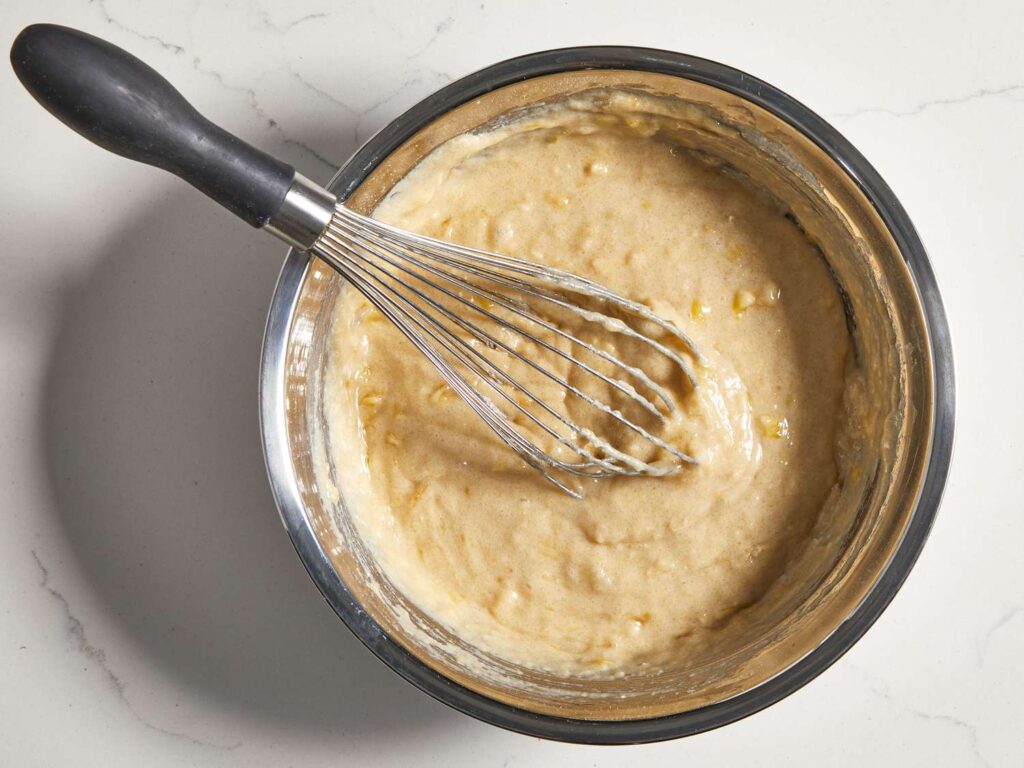
When it comes to making moist banana bread, one of the easiest mistakes to make is overmixing the batter. You might be tempted to blend everything together until it’s perfectly smooth, but this can actually lead to dense, dry bread that’s far from the fluffy treat you’re hoping for. Let’s dive into why mixing just until combined is so important.
First, it helps to understand what happens when you mix your batter. Banana bread is made from a simple combination of flour, sugar, bananas, eggs, and other ingredients. When you stir these ingredients, you activate the gluten in the flour. Gluten gives baked goods their structure, but too much gluten can make your bread tough and chewy instead of soft and moist.
When you overmix, you’re working that gluten too much, which can result in a dense loaf that doesn’t rise well. This is especially true for banana bread, where we want that lovely, soft texture that melts in your mouth. If you’re mixing until the batter is perfectly smooth, you’re likely adding more air than necessary, leading to a tougher result.
So, what’s the solution? Mix just until the ingredients are combined. It’s okay if there are a few lumps—those are perfectly normal! As soon as you see that the flour is incorporated and there aren’t any dry patches, stop mixing. This way, you’re allowing your banana bread to retain its moisture and lightness.
A great trick is to use a spatula or wooden spoon instead of a mixer. This allows you to have better control and feel when the batter is ready. Plus, it’s a lot easier to gauge whether you’ve mixed enough. Just gently fold the ingredients together, and remember: a few lumps won’t hurt your bread; they’ll help keep it moist and tender.
In summary, don’t be too eager to mix your batter. Keeping it light and gentle will ensure your banana bread turns out soft and delicious, making every slice a joy to eat. So, the next time you’re whipping up a batch, remember this tip: mix just until combined, and you’ll be on your way to baking the best moist banana bread ever!
3. Add Sour Cream or Yogurt
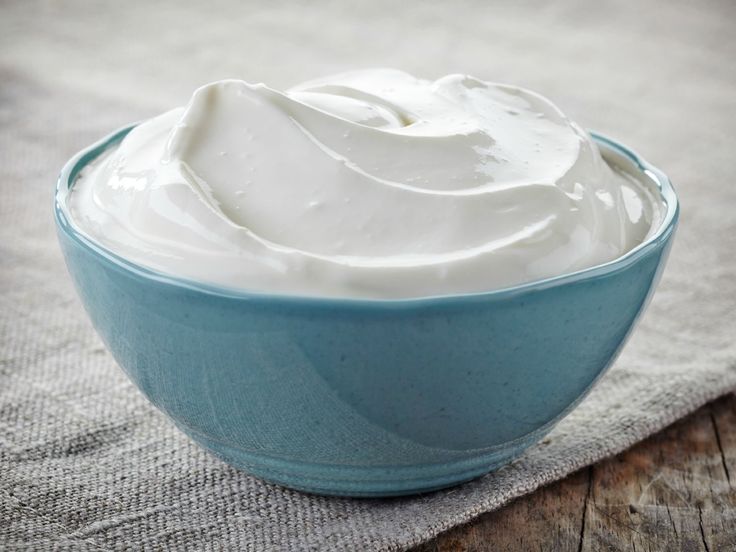
When it comes to making moist banana bread, one of the best secrets is to add sour cream or yogurt to your batter. You might be wondering why these ingredients matter, so let’s break it down.
Sour cream and yogurt are both creamy and tangy, which can do wonders for your banana bread. They add extra moisture that keeps the bread soft and tender. This is especially important because you want your banana bread to be fluffy, not dry or crumbly. By including either of these ingredients, you’re not just enhancing the texture; you’re also adding a subtle richness that makes each bite more enjoyable.
Another great thing about sour cream and yogurt is their acidity. This acidity helps to balance the sweetness of the bananas, creating a more complex flavor. You’ll find that your banana bread tastes richer and more delicious without being overwhelmingly sweet. Plus, they can help activate baking soda, which means your bread will rise nicely.
If you don’t have sour cream or yogurt on hand, don’t worry! There are some fantastic alternatives you can use. Buttermilk is a great option—its liquid consistency is similar to yogurt, and it provides that extra moisture and tang. Just replace the amount of sour cream or yogurt with an equal amount of buttermilk.
Cream cheese is another option. It adds a wonderful creaminess to your banana bread, but it’s a bit thicker. If you choose cream cheese, you might want to soften it first and mix it with a little milk to achieve a smoother consistency.
Overall, adding sour cream or yogurt (or their alternatives) is a simple way to elevate your banana bread. It’s a small change that can make a big difference in moisture and flavor, leading to a loaf that’s not only delicious but also incredibly satisfying. So next time you’re whipping up a batch, consider reaching for that tub of sour cream or yogurt in your fridge! You’ll be glad you did.
4. Measure Flour Correctly
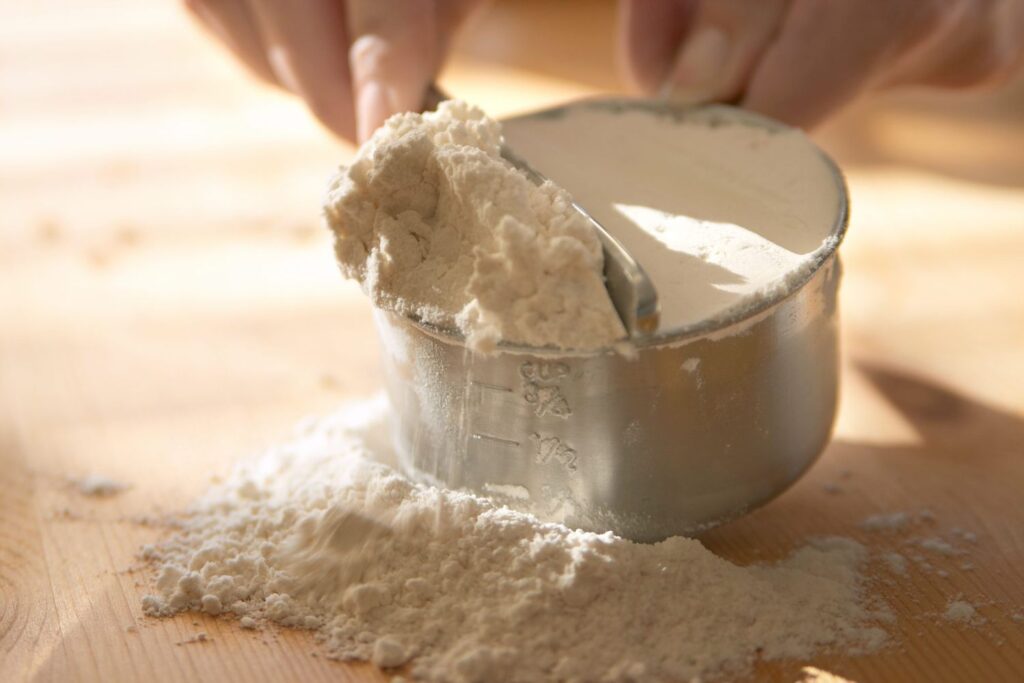
Measuring flour might seem like a small detail, but it can make a big difference in your banana bread’s texture. If you use too much flour, your bread can turn out dry and dense, which is not what we want when we’re aiming for that perfect moist banana bread. So, let’s dive into how to measure flour correctly!
First, let’s talk about the “spoon and level” method. This technique is super simple and effective. Start by grabbing a spoon and your flour container. Instead of scooping the flour directly with your measuring cup, use the spoon to gently scoop the flour into the measuring cup. This helps to avoid packing the flour down, which can lead to using more than you actually need. Once you’ve filled the cup, take a straight edge—like a knife or a spatula—and level off the excess flour. This method gives you a more accurate measurement, helping to keep your banana bread nice and moist.
Now, let’s compare that to the common mistake of scooping directly from the bag. When you scoop flour directly, you can end up packing it down into the cup without even realizing it. This can add extra flour to your mix, which often results in dry banana bread. It’s easy to make this mistake, especially when you’re in a hurry, but it’s worth taking a moment to measure correctly.
Another tip is to fluff up your flour before measuring. Simply stir the flour in its container with a spoon to aerate it a bit. This can help break up any clumps and ensure you’re not getting more flour than you bargained for.
In summary, measuring flour correctly is key to achieving the perfect moist banana bread. By using the “spoon and level” method instead of scooping straight from the bag, you’ll have a much better chance of creating a deliciously soft loaf. Remember, it’s these little steps that can elevate your baking game and keep your banana bread wonderfully moist! Happy baking!
5. Incorporate Brown Sugar
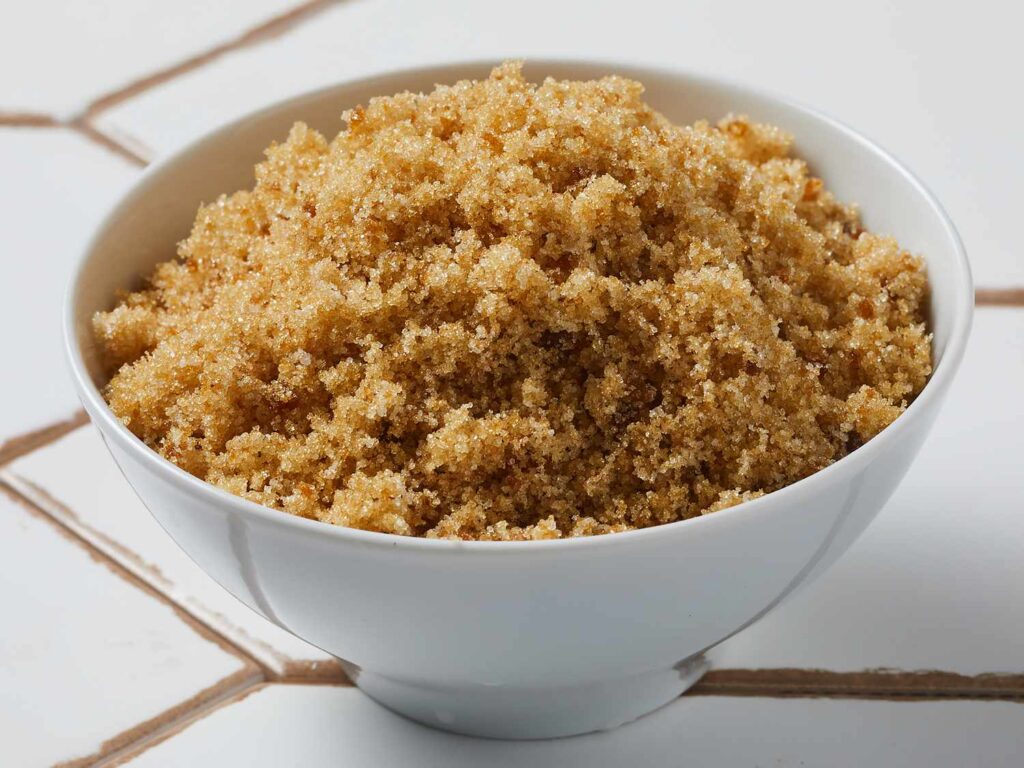
When it comes to baking moist banana bread, the type of sugar you use can make a big difference. One secret ingredient that can elevate your banana bread is brown sugar. Unlike white sugar, brown sugar is made by adding molasses back into refined sugar, which gives it that lovely rich color and distinct flavor. This little addition not only sweetens your bread but also helps keep it moist.
So, how exactly does brown sugar contribute to that perfect texture? The molasses in brown sugar contains moisture, which helps to create a softer crumb in your moist banana bread. This means that every bite feels tender and delicious instead of dry and crumbly. If you’ve ever tasted moist banana bread that feels more like a brick than a loaf, it might be because it was made with only white sugar. White sugar, while still sweet, lacks the moisture-retaining properties of brown sugar, which can lead to a drier end result.
But you don’t have to rely solely on brown sugar. A great way to achieve the best of both worlds is to use a mix of brown and white sugar in your recipe. Combining the two not only gives you the moisture and richness from the brown sugar but also the lightness and sweetness of white sugar. This blend enhances the flavor profile of your moist banana bread, making it taste more complex and satisfying.
For instance, if your recipe calls for one cup of sugar, try using half brown sugar and half white sugar. This simple swap can really elevate your baking game. Plus, you can experiment with different ratios based on your taste preference. If you love that deep, caramel-like flavor, go a bit heavier on the brown sugar.
In short, incorporating brown sugar into your moist banana bread not only boosts moisture but also adds a wonderful depth of flavor. So next time you bake, consider this sweet tip for a slice of banana bread that’s irresistibly moist and full of character!
6. Don’t Overbake
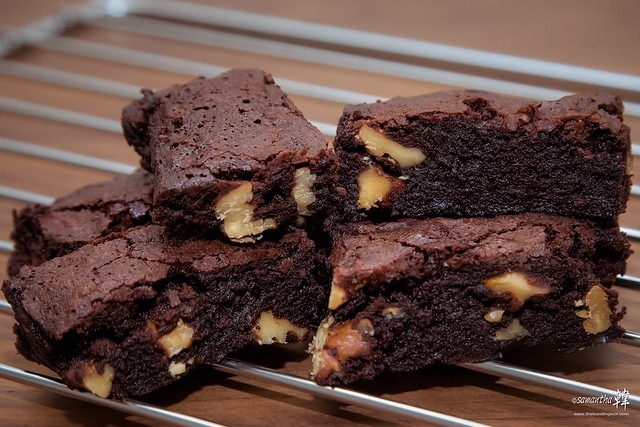
One of the most common mistakes when baking moist banana bread is overbaking it. It’s easy to think that leaving it in the oven a bit longer will ensure it’s fully cooked, but this can actually lead to dry, crumbly bread. So, how can you tell when your moist banana bread is perfectly done without risking overbaking? Let’s dive into some simple tips.
The Toothpick Test
One of the best ways to check for doneness is the toothpick test. When you’re close to the end of your baking time, usually around 50 to 60 minutes for a standard loaf, grab a clean toothpick or a skewer. Gently insert it into the center of the bread. If it comes out clean or with just a few moist crumbs sticking to it, your moist banana bread is ready! If the toothpick is covered in wet batter, it needs more time. Just be careful not to leave it in for too long, as even a couple of extra minutes can make a big difference.
Baking Times and Temperatures
Generally, moist banana bread should be baked at a temperature of around 350°F (175°C). This is a sweet spot that allows the bread to cook through without burning. Most recipes will call for a baking time of 50 to 65 minutes, depending on the size of your loaf and your specific oven. Remember, every oven is a bit different, so it’s a good idea to start checking on your bread a few minutes before the minimum baking time.
Keep an Eye on the Color
Another way to gauge doneness is by observing the color of your banana bread. It should be a beautiful golden brown on top. If it starts to get too dark, it’s likely overbaking. You can even cover the top with aluminum foil during the last few minutes of baking to prevent it from browning too much while the inside continues to cook.
By keeping an eye on the time, doing the toothpick test, and checking the color, you can achieve a perfectly moist banana bread every time. Remember, a little vigilance goes a long way in ensuring your banana bread is deliciously moist and not overly dry! Happy baking!
7. Add a Moisture Boost with Oil or Melted Butter
When it comes to baking moist banana bread, one of the best ways to enhance its texture is by using oil or melted butter. Both options can make your banana bread wonderfully soft and delicious, but they bring different qualities to the table.
Oil vs. Butter: Which Should You Choose?
Let’s start with oil. Using vegetable or canola oil in your moist banana bread can add a great deal of moisture without weighing it down. Oil helps keep the bread tender and soft because it coats the flour, preventing gluten from developing too much. This means you’ll end up with a lighter, fluffier loaf.
On the other hand, melted butter offers a rich flavor that many people love. Butter brings a classic taste to moist banana bread that’s hard to beat. However, because butter is solid at room temperature, it can make the bread a bit denser compared to oil.
Balancing Oil and Butter for the Best Results
If you want the best of both worlds, consider using a combination of oil and melted butter in your recipe. This balance not only enhances the moisture content but also adds depth of flavor. For example, you could use half a cup of melted butter and a quarter cup of oil. This way, you get that rich buttery taste along with the lightness that oil provides.
When mixing, make sure your melted butter isn’t too hot; if it is, it can cook the eggs if added directly. Let it cool slightly before combining. Mixing your wet ingredients thoroughly, including the oil and butter, ensures they blend well, which is key to achieving that moist texture throughout the bread.
In summary, whether you choose oil, butter, or a mix of both, these fats are crucial for baking moist banana bread. They each contribute unique qualities that enhance flavor and texture, making your bread delightful and enjoyable. So, the next time you whip up a batch of moist banana bread, consider what you want out of your recipe and pick the right combination of fats to make it extra special!
Conclusion
In summary, here are the 7 tips for achieving that perfectly moist banana bread:
- Use overripe bananas for extra sweetness and moisture.
- Don’t overmix the batter to keep it light and fluffy.
- Add sour cream or yogurt to boost moisture and richness.
- Measure your flour correctly to avoid dryness.
- Incorporate brown sugar for added moisture and flavor.
- Avoid overbaking to keep your bread soft and tender.
- Use oil or melted butter to enhance moisture and taste.
Now it’s your turn to put these tips into action! Give them a try the next time you bake, and you’ll be amazed at the difference they make.
We’d love to hear about your moist banana bread adventures! What tips do you swear by, or do you have any special secrets for making it extra delicious? Share your experiences in the comments!
If you want to read more about the food topic click here
